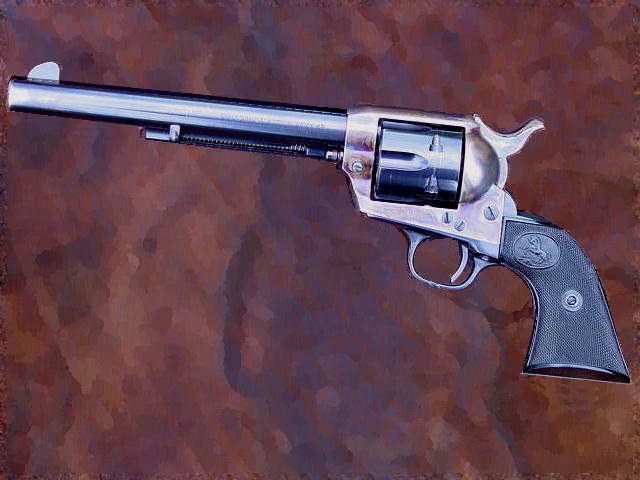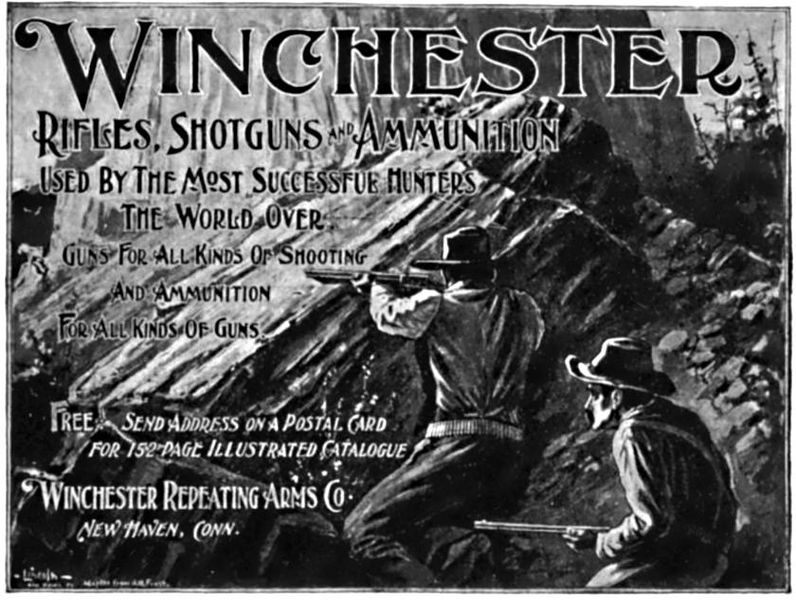The New Trend in State Symbols: Guns
 John Moses Browning, the firearms designer and namesake of the Utah state gun. (Photo: Public Domain/WikiCommons)
John Moses Browning, the firearms designer and namesake of the Utah state gun. (Photo: Public Domain/WikiCommons)
Many people realize that their states have state seals, state flags and state songs. Many are also familiar with their state flowers (in Tennessee for instance, it’s the delicate iris) and trees (in California it’s the majestic sequoia).
But state symbols have run amok over the years, and every state now has several totems: there are state tartans, crustaceans, poems, and toys.
A carousel is the official state “Folk Art” of Rhode Island, Louisiana’s state musical instrument is the diatonic accordion, Oregon’s state seashell is the Oregon hairy triton. And in recent years a more eyebrow-raising symbol has been added to the ranks.
Since 2011, six states have adopted state firearms, so that guns along with flora and fauna, officially represent them.
It all started in Utah in 2011. The first state gun effort was to name the Browning M911 semiautomatic pistol the official firearm. The House of Representatives passed the measure with hot debate on the House floor. Republican Rep. Carl Wimmer rallied on behalf of the gun, saying, “This firearm was created by John Moses Browning, who was a son of Utah pioneers.”

A painting of a Second generation Colt Single Action Army Revolver. (Photo: Public Domain/WikiCommons)
Democrat Carol Spackman Moss spoke out against the measure, invoking the then-recent shooting of U.S. House of Representatives member Gabrielle Giffords: “It seems insensitive to me at this time when many people are mourning the deaths of six people in Tucson and the serious wounding of Gabrielle Giffords, a friend of mine.”
The proponents prevailed, and after the House voted in favor, Utah’s governor signed into law the very first official state firearm.
Arizona adopted the Colt Single Action Army Revolver later that same year. Gun control advocates bridled at the bill, which was working its way through the legislature just two months after the Tucson shooting. Opponents pointed out that the firearm wasn’t even made in Arizona—it is manufactured in Connecticut and the gun’s maker lobbied for the bill.
Todd Rathner, a lobbyist for Colt, told the Associated Press that “Arizona was founded by rugged individuals who took care of themselves and did so largely with a Colt Single Action Army Revolver on their hip.” Again, proponents prevailed, and then-Arizona governor Jan Brewer signed the bill into law in April 2011.
 Winchester Repeating Arms Company advertisement, 1898. Alaska’s state rifle is the Winchester pre-1964 Model 70. (Photo: Public Domain/WikiCommons)
Winchester Repeating Arms Company advertisement, 1898. Alaska’s state rifle is the Winchester pre-1964 Model 70. (Photo: Public Domain/WikiCommons)
Now state guns began arriving at a steady clip. Indiana adopted the Grouseland Rifle in 2012. In 2013 West Virginia anointed the Hall Flintlock Model 1819 their official firearm. In 2014, two states followed suit: Pennsylvania chose the Long Rifle and Alaska the Winchester pre-1964 Model 70. A special history or connection with the state is the typical reasoning for earning state symbol status and guns are no exception.
“To be an Alaskan during the period 1930 to 1963 meant carrying the “rifleman’s rifle,” the Winchester pre-1964 Model 70,” reads the Alaska bill. “This was the bolt-action rifle that helped Alaska men and women establish a firm foothold in the untamed and often wild Alaska wilderness.”
In Pennsylvania, state representative Mark B. Cohen told the House that “having a state gun is deeply offensive to many people in Pennsylvania. We ought not to pass this amendment. We ought to show some sensitivity to the loss of human life.”

Louisiana’s state musical instrument, the diatonic accordion. (Photo:F Lamiot/WikiCommons CC BY-SA 3.0)
But others opposed the effort for different reasons. Patrick Hornberger, a historian and a member of the Pennsylvania Antique Gun Collectors Association, wrote to a local newspaper to point out problems he had identified in the language of the bill including that the gun played an important part in the Industrial Revolution (it was actually handmade, he argued), that it was the first American firearm (that distinction belonged to the New England musket/fowler, he wrote), and that the gun was designed by a Martin Meylin.
“As no rifle has ever been positively attributed to Meylin,” Hornberger wrote, “How can his rifles possibly be called ‘artistic’?”
State guns are arriving on the scene during a time when there is a bit of exhaustion over the proliferation of state symbols. An Associated Press article chronicled the annoyance that many legislators are beginning to feel at the mounting pile of proposals that suck up their time—these proposals are often literally the work of children. Proposing state symbols is a popular way to teach kids a civics lesson. The exhaustion is such that Missouri is considering a bill that would put a cap on state symbols. Twenty-eight may be enough for them.

Milk, the state beverage of 21 states. (Photo: Stefan Kühn/WikiCommons CC BY-SA 3.0)
State symbol fatigue may have reached it cultural peak this year when a group of students went to the New Hampshire House Gallery to hear lawmakers debate their bill to name the red tailed hawk the official state raptor. Students listened as officials excoriated the bill.
“We already have a state bird. But do we need a state raptor? Isn’t that a bird?,” opined one. “If we keep bringing more of these bills and bills and bills forward that really I feel we shouldn’t have in front of us, we’ll be picking a state hot dog next,” said another.
HBO’s John Oliver pounced, devoting a segment to the story and lambasting the legislators. “What is wrong with you?,” he shouted before declaring the Red Tail Hawk the official raptor of Last Week Tonight.

A red-tailed hawk, the official raptor of ‘Last Week Tonight’, but not New Hampshire. (Photo: Brocken Inaglory/WikiCommons CC BY-SA 3.0)
Oddly, children have long been involved in the choosing of state symbols, a tradition that is often traced back to the 1893 Chicago World’s Fair, when states were preparing to send exhibitions that represented everything unique their state had to offer, including flowers.
According to a June 1917 National Geographic, Oklahoma was the first to adopt a state flower in 1893, prompted by the fair. (They picked mistletoe, which would eventually be renamed the “state floral symbol” and the Oklahoma Rose was named the state flower. The state wildflower is the Indian Blanket, or Blanket Flower.)
In the years that followed, letting school children nominate and vote on the state flower became popular. School children chose the state flower of Mississippi, Rhode Island, Wisconsin, Maine and others. By 1917, 26 states had picked state flowers.
The school children and ladies’ auxiliary clubs of the past probably could not have predicted that their interest in flowers would many years later lead to heated debates over gun-control on the floors of state governments. But even if such debates, and the proliferation of symbols, may have exhausted some, it has electrified others. Indiana’s recognition of the Grouseland Rifle prompted Field & Stream magazine to ask their readers what the firearms of every state should be and published the list in their July 2012 issue.
At least one of those predictions became reality when the Long Rifle was added to Pennsylvania’s list of state symbols in 2014, joining the Great Dane, Ruffed Grouse, and milk.







Follow us on Twitter to get the latest on the world's hidden wonders.
Like us on Facebook to get the latest on the world's hidden wonders.
Follow us on Twitter Like us on Facebook